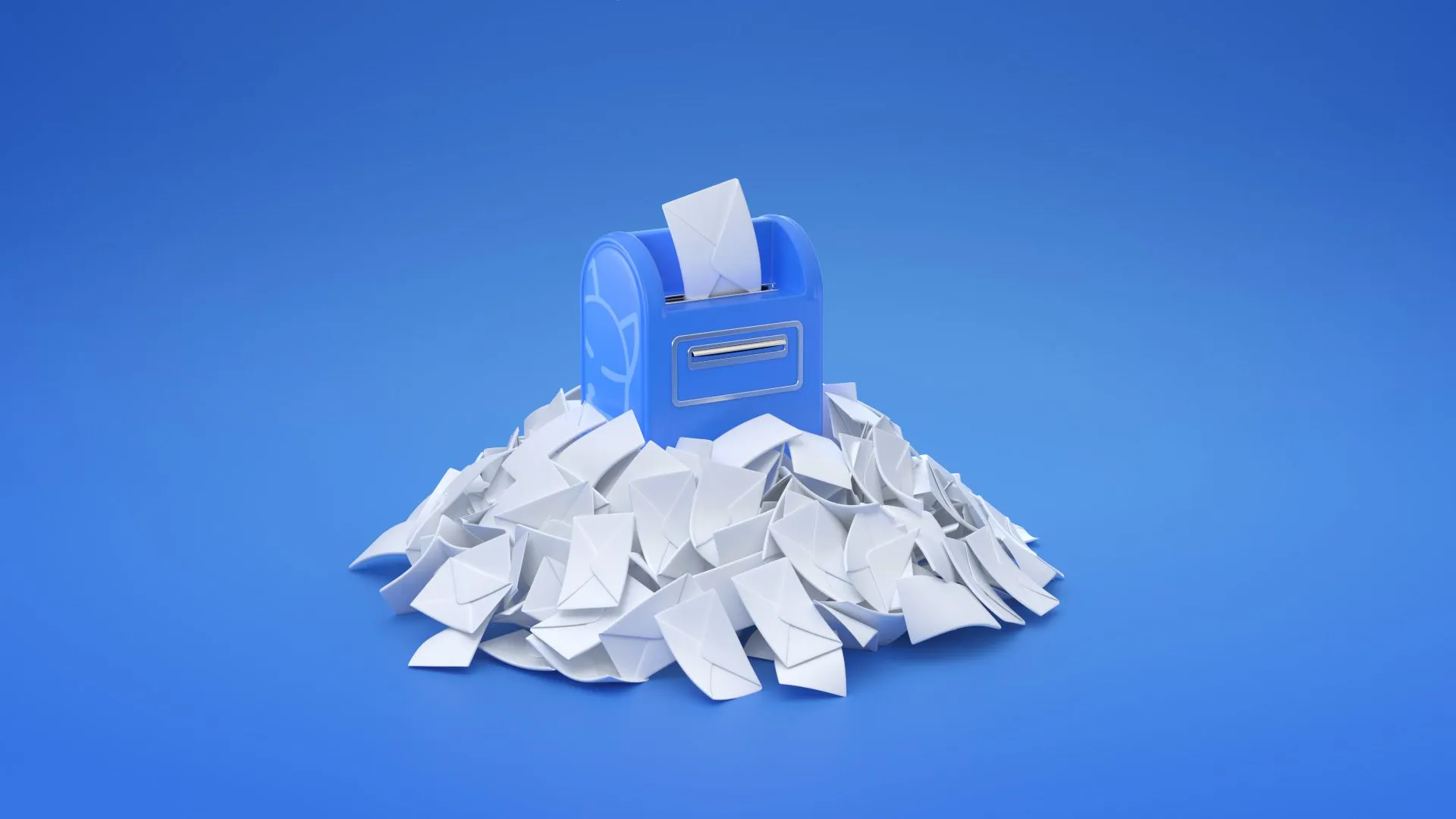How to Prepare Your Domain for Cold Email Outreach in 2025
Ready to launch your cold email campaigns but worried about landing in spam folders? You're not alone. With AI-powered spam filters becoming more sophisticated and domain reputation now outweighing IP reputation, preparing your domain properly has never been more critical.
This comprehensive guide will show you exactly how to set up your domain for maximum deliverability and build the sender reputation that gets your emails into inboxes, not spam folders.
Why Your Domain Setup Matters More Than Ever in 2025
Here's the reality: global inbox placement rates declined in 2024, and the stakes are higher than ever. Email providers are using advanced AI to evaluate every aspect of your sending behavior, from domain age to engagement patterns.
Getting this wrong means your perfectly crafted cold emails will never see the light of day. Getting it right means you'll have a competitive advantage while others struggle with deliverability.
Choosing the Right Domain Strategy
The Two-Domain Approach (Recommended)
In 2025, using a separate domain for cold outreach isn't just recommended—it's essential. Here's why:
Protection: Your main domain stays safe from potential deliverability issues Monitoring: You can track cold email performance without mixing it with other communications Scalability: You can run multiple campaigns without overloading your primary inbox
Domain Options for Cold Outreach
Option 1: Register a Similar Domain This is the gold standard. If your main domain is company.com, consider:
getcompany.comtrycompany.comcompany.cocompanyapp.com
Option 2: Brand New Domain If you're starting fresh, focus on:
- Choosing a
.comextension (still the most trusted) - Avoiding hyphens, numbers, or complex spellings
- Keeping it brandable and memorable
Option 3: Avoid These Mistakes
- Don't use your main domain for cold outreach
- Never buy second-hand domains without checking their reputation
- Avoid free email providers (Gmail, Yahoo, etc.) for business outreach
Domain Extension Strategy
While .com remains king, here are your best alternatives:
- .co - Perfect for companies, professional appearance
- .io - Great for tech and SaaS companies
- .net - Solid alternative when
.comisn't available
Avoid country-specific TLDs unless you're targeting that specific region.
Essential DNS Records Setup
Getting your DNS records right is like getting your ID verified—it proves you're legitimate. This technical foundation is absolutely critical for cold email success in 2025.
You'll need to properly configure SPF, DKIM, DMARC, MX, and A records. These authentication protocols aren't optional anymore—they're the baseline requirement for inbox delivery.
Pro Tip: Use tools like Folderly's Inbox Insights to verify all your records are set up correctly. Getting this wrong means your emails will never reach inboxes, no matter how good your content is.
Building Your Sender Reputation
Your sender reputation is your email deliverability credit score. Here's how to build it:
Email Address Best Practices
Use Real Names: john.smith@company.com beats sales@company.com every time Professional Photos: Add your real photo to build trust Consistent Branding: Use the same name and photo across all platforms
Email Signature Excellence
Your signature should include:
- Full name and title
- Company name and logo
- Direct phone number
- Website URL
- One social media link (LinkedIn preferred)
Social Media Optimization
LinkedIn First: This is where prospects will verify you
- Complete your profile with 500+ connections
- Post industry-relevant content regularly
- Get recommendations from colleagues
Company Pages: Keep them active and professional
- Regular posting schedule
- Respond to comments and messages promptly
- Share valuable industry insights
Website Preparation
Mobile Optimization: Over 60% of emails are opened on mobile devices Fast Loading: Page speed affects credibility Clear CTAs: Make it easy for prospects to take action Trust Signals: Include testimonials, case studies, and client logos
The 2025 Email Warmup Process
Email warmup now requires a minimum of two weeks, but we recommend 6-8 weeks for optimal results. Here's the modern approach:
Week 1-2: Foundation Building
- Send 5-10 emails per day
- Focus on friends, colleagues, and team members
- Ensure high open and reply rates
- Include one link per email to legitimate websites
Week 3-4: Gradual Scaling
- Increase to 15-25 emails per day
- Expand to business contacts
- Maintain high engagement rates
- Mix personal and business-related content
Week 5-6: Volume Increase
- Scale to 35-50 emails per day
- Include prospects from different email providers
- Monitor deliverability closely
- Adjust based on performance metrics
Week 7-8: Campaign Preparation
- Reach your target daily volume
- Fine-tune based on engagement patterns
- Prepare for campaign launch
- Final deliverability checks
Modern Warmup Content Strategy
Avoid These 2025 Mistakes:
- Generic "test" emails
- Identical content across messages
- Sudden volume spikes
- Ignoring engagement metrics
Do This Instead:
- Write relevant, conversational emails
- Vary your content and timing
- Gradually increase volume
- Monitor AI-driven spam filter responses
Automation vs. Manual Warmup
Manual Warmup: Good for small-scale operations but time-intensive
Automated Tools: Essential for scaling, with AI-powered engagement simulation
Tools like Folderly's deliverability service handle this automatically, saving you weeks of manual work while achieving better results.
Content Best Practices for 2025
Subject Lines:
- Avoid spam words
- Keep under 50 characters
- Make them relevant to email content
- Test different approaches
Email Body:
- Personalize beyond first name
- Keep it concise (75-125 words ideal)
- Include clear value proposition
- One clear call-to-action
Spam Trigger Avoidance: AI-powered spam filters now analyze behavioral signals, not just keywords. Focus on:
- Genuine personalization
- Relevant content
- Consistent sending patterns
- High engagement rates
Launching Your Cold Email Campaign
Launch Strategy
Week 1: Start with 20-30 emails per day
Week 2: Scale to 50-75 emails per day
Week 3+: Reach your target volume (typically 100-200 per day) in case there's no problems with deliverability.
Monitor These Metrics:
- Bounce rate (<2%)
- Reply rate (>2%)
- Spam complaint rate (<0.1%)
Ongoing Optimization
Weekly Reviews:
- Analyze performance metrics
- Adjust sending patterns
- Update content based on responses
- Clean unengaged contacts
Monthly Audits:
- Review domain reputation
- Update templates and subject line at least once a month
- Analyze campaign performance
- Plan new strategies
Advanced Strategies for 2025
Multi-Channel Approach
Cross-channel engagement is becoming essential in 2025. Consider:
- LinkedIn outreach coordination
- SMS follow-ups for undelivered emails
- Social media engagement
AI-Powered Optimization
Use tools like Folderly AI to:
- Generate high-converting email sequences
- Optimize sending times
- Personalize at scale
- Predict deliverability issues
Deliverability Monitoring
Daily Monitoring:
- Inbox placement rates
- Spam folder placement
- Authentication status
- Sending reputation scores
Weekly Analysis:
- Engagement trend analysis
- Competitor benchmarking
- Content performance review
- Technical health checks
Common Mistakes to Avoid
Technical Mistakes
- Incomplete DNS setup
- Mixing domains inappropriately
- Neglecting authentication
- Ignoring domain reputation
Content Mistakes
- Over-personalization that seems fake
- Generic templates
- Pushy or sales-heavy language
- Neglecting mobile optimization
Strategy Mistakes
- Rushing the warmup process
- Ignoring engagement metrics
- Failing to segment properly
- Not having backup cold outreach domains
Measuring Success
Key Performance Indicators
Deliverability KPIs:
- Inbox placement rate: >80%
- Spam rate: <5%
- Bounce rate: <2%
- Authentication pass rate: 100%
Engagement KPIs:
- Click-through rate: >3%
- Reply rate: >2%
- Conversion rate: >0.5%
Reputation KPIs:
- Domain reputation score: >70
- Sender score: >80
- Complaint rate: <0.1%
- Unsubscribe rate: <0.5%
The Bottom Line
Preparing your domain for cold email outreach in 2025 isn't just about following a checklist—it's about building long-term deliverability success. The investment in proper domain setup, authentication, and warmup pays dividends in campaign performance and sender reputation.
Remember: it's about shifting from volume to value, from spammy to smart. Focus on quality over quantity, and your cold email campaigns will cut through the noise while others struggle with deliverability.
Your prospects are waiting for valuable solutions to their problems. Make sure your emails actually reach them.
Ready to get started? Use Folderly's comprehensive deliverability tools to set up your domain correctly, warm up your emails effectively, and monitor your performance continuously. Because in 2025, your domain preparation isn't just about sending emails—it's about sending emails that actually work.

